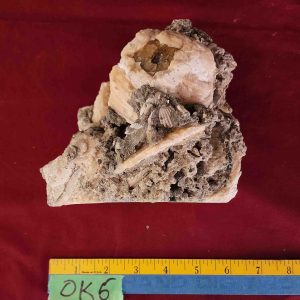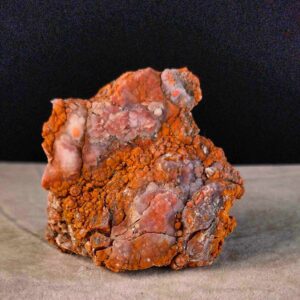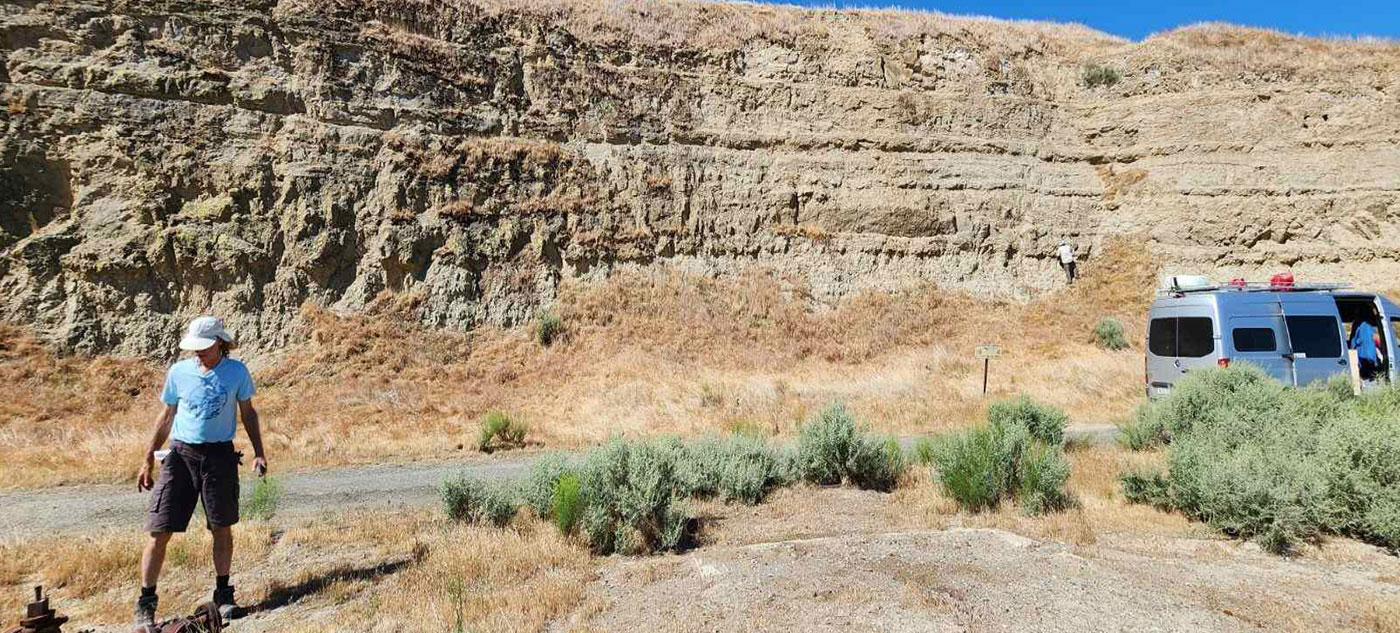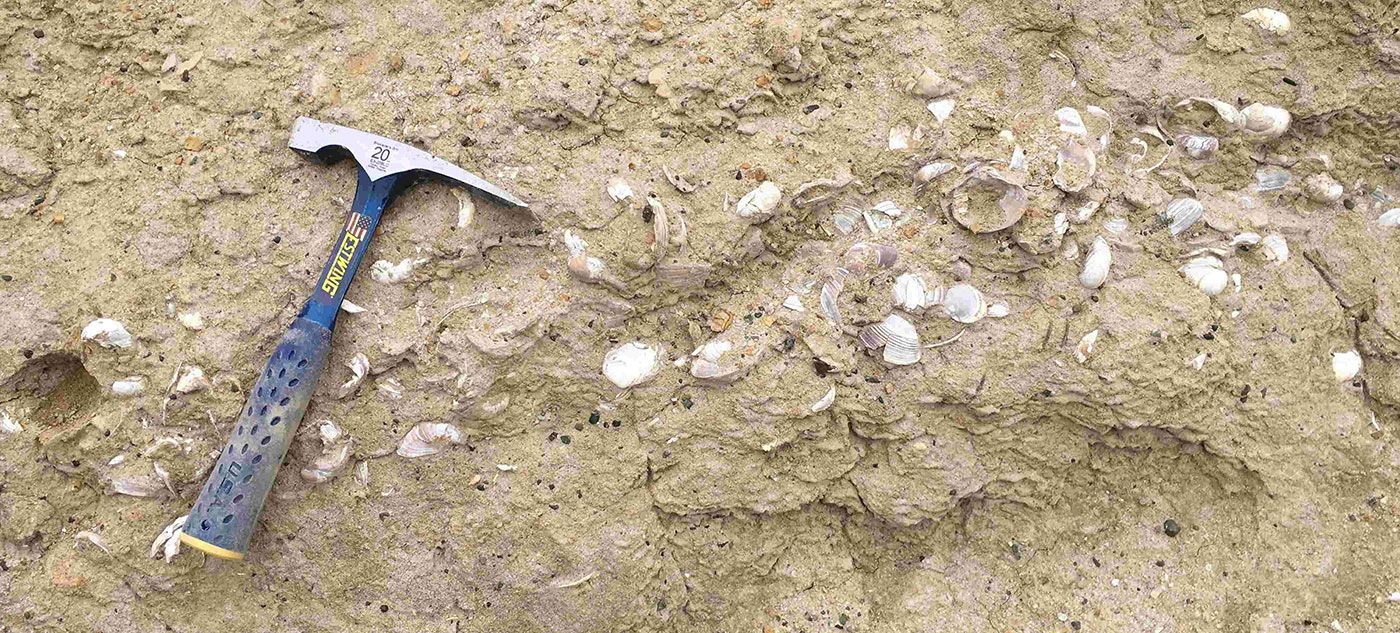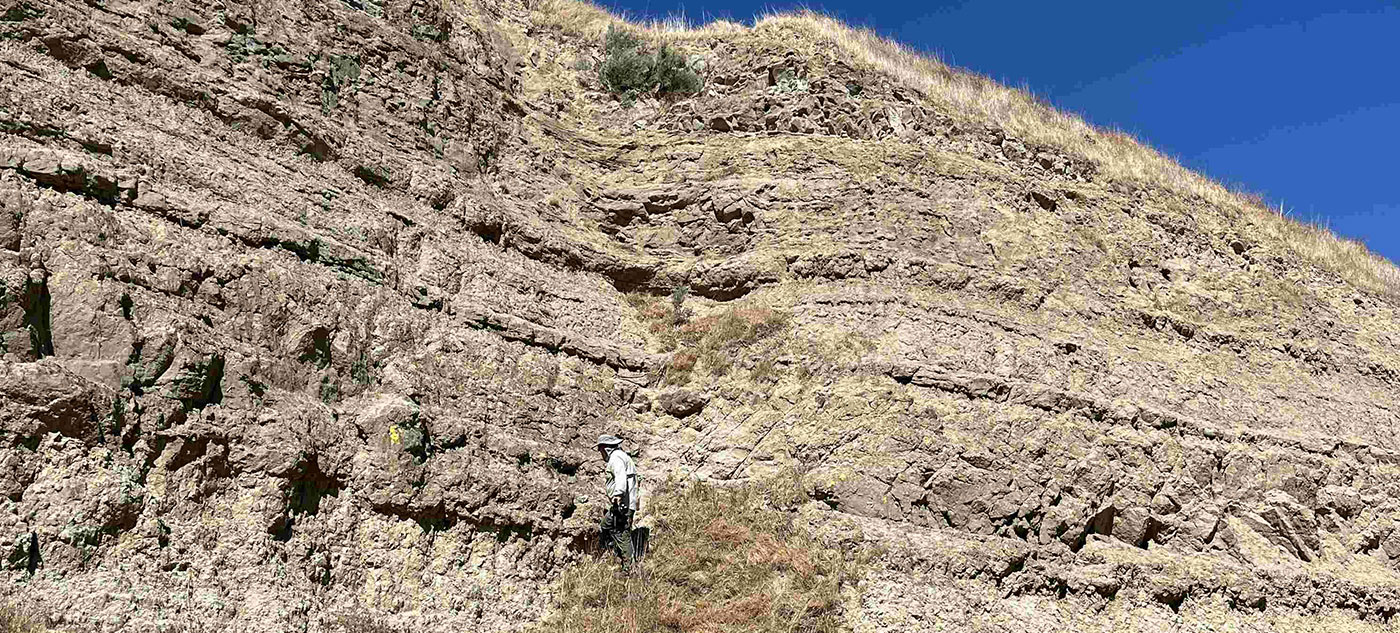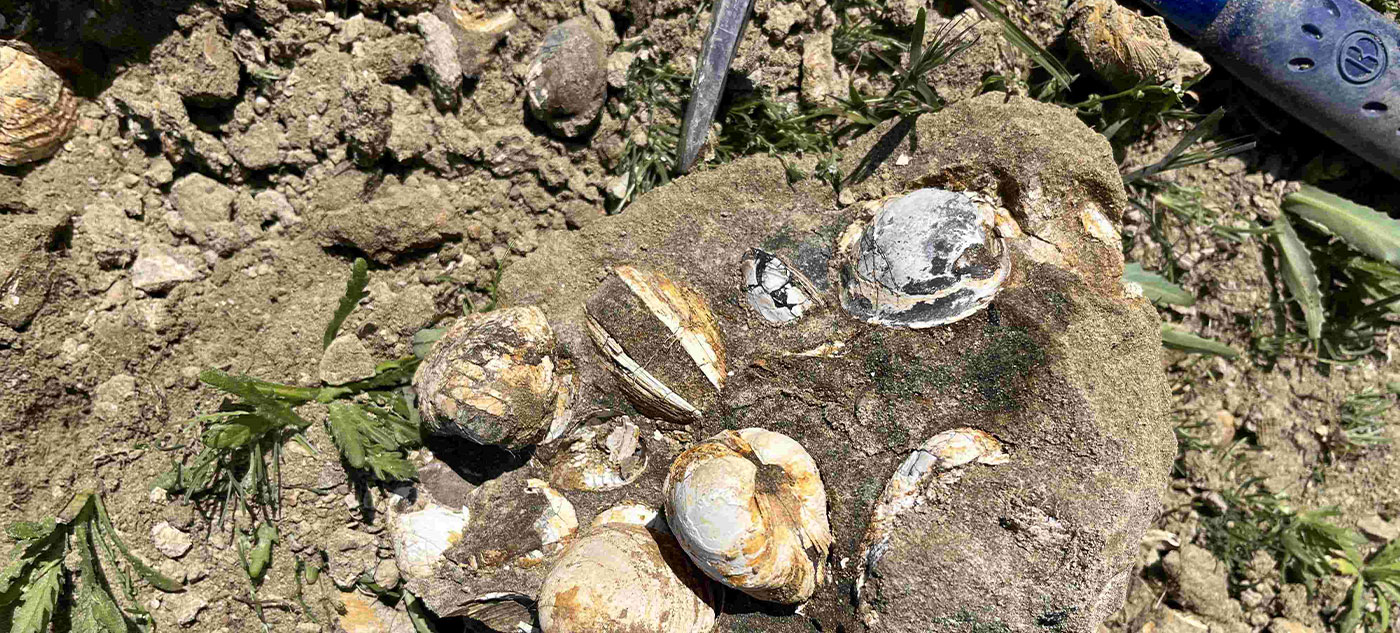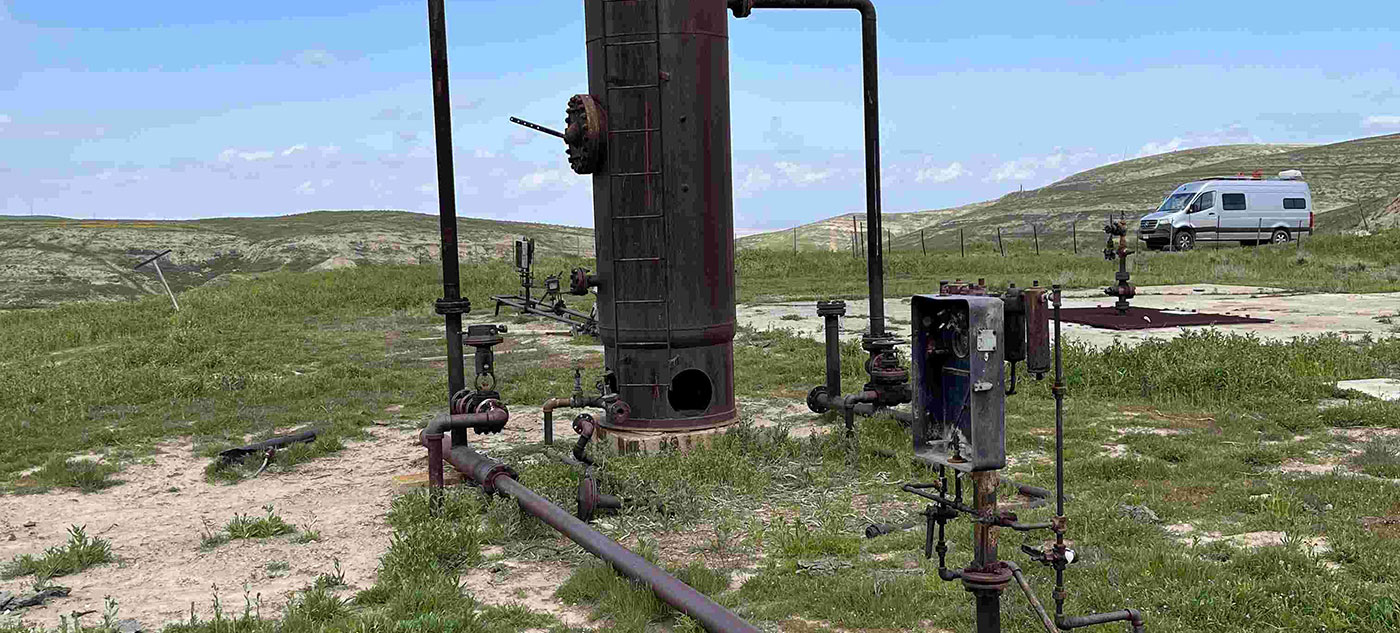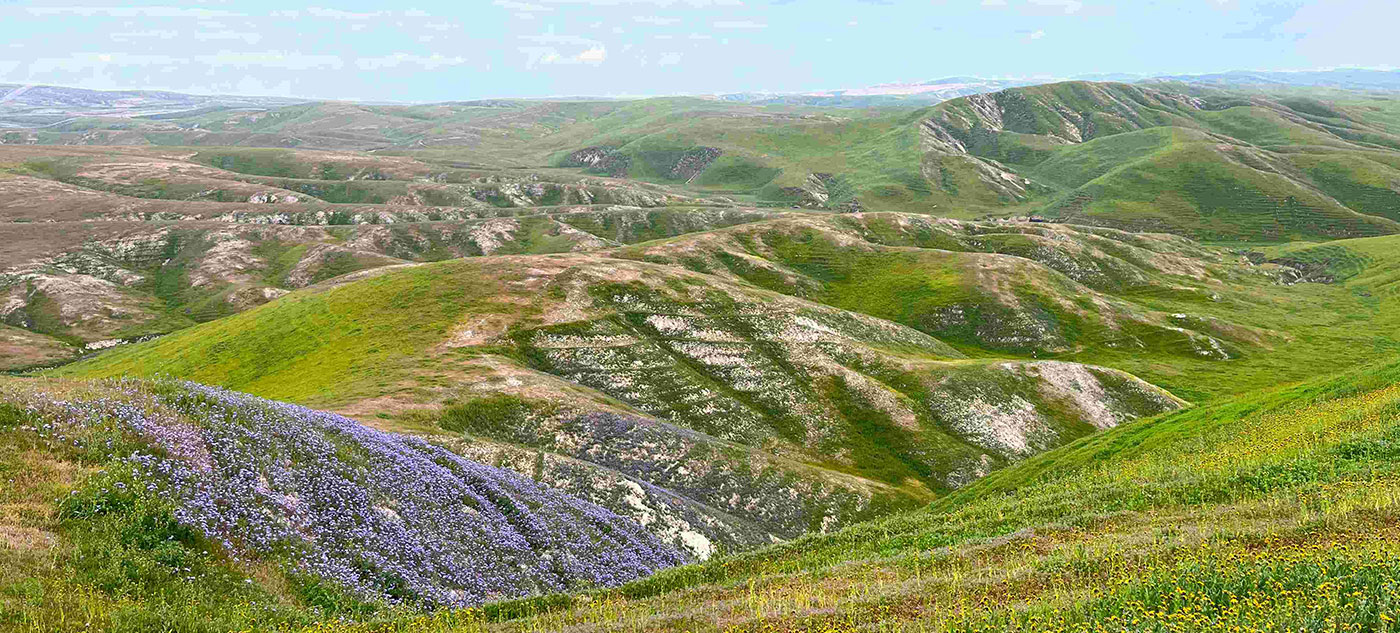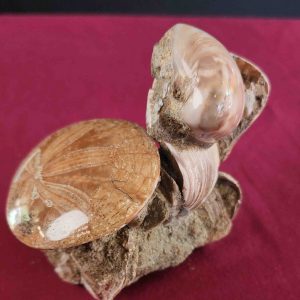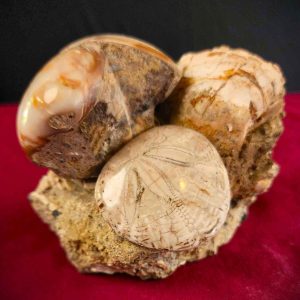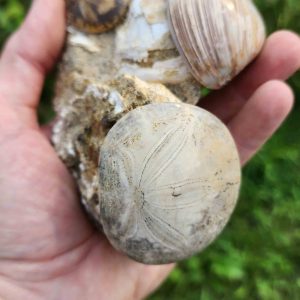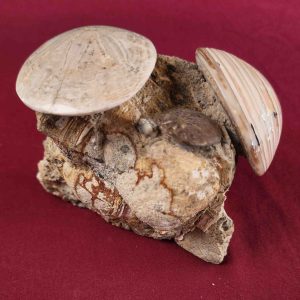Kettleman Hills Fossils
Swipe the photo above to view more images of the site
Kettleman Oil
The Kettleman Hills near Avenal, California was long suspected to house oil deposits. Geologically they are made up of oceanic sediments twisted into “anticline domes” – just like other domes in the region. The frustrating difference was that all the other domes had oil, and plenty of it: You could scarcely start the engine to turn a drill before the lid got blown off by an oil gusher. At Kettleman, however, time and again the drillers came up dry even after sinking holes over a 1,000 feet deep. Then along came Bernie Scott, a geologist who was positive the oil was there, but was deep. He convinced the Milham Company to take a chance. They started drilling in early 1927 at their Elliott No.1 well. As long as the bit would turn, they would continue drilling. In a year they had drilled almost 5,000 feet – an astounding depth at the time – but not a trace of oil did they find. They kept at it. They drilled, and drilled, and drilled – for 19 months! Finally in October of 1928, at a depth of over 7,000 feet they hit it – one of the largest oil strikes ever. The gusher erupted like a volcano with pressures estimated at over 3,000 psi! It blasted the entire derrick to Kingdom Come and took over three months to calm down enough to install a wellhead. Soon after, there were derrick’s and well heads everywhere. In short order the Hills became awash with crude oil – and with it came an epic environmental disaster. But that mattered not in the 1920s. Now, nearly 100 years later, the field is played out. Less than one-half of one percent (0.5%) of the reserve is left. The derrick’s and well heads are almost completely gone and Nature has mostly reclaimed the land. In the springtime the Kettleman Hills are once-again green and beautiful. Wildflowers bloom along the hillsides much the same way they did a century ago. There are still a few wells and relics that remind one of the intense oil production here – miles and miles of piping crisscross the hills like so much spaghetti – but most of the human impact is now buried below the sediments of the surface and is thus fairly benign.
How They Formed
These well-preserved fossil shellfish lived in a shallow sea that covered the San Joaquin Valley of southern California during the Pliocene (about 4 million years ago). The area probably resembled the seabed that can be seen off the coast of California today. During storms, some of the beds which housed the animals became quickly buried in sediments. This was bad news for the clams and sand dollars, but ultimately good news for you: the rapid burial did a great job of preserving the shells intact. Under heat and pressure from the sediments and later geologic forces, the shells altered into calcite, yet preserved their fine detail. Later, due to movement of the nearby San Andreas fault, the whole area was uplifted, exposing the old seafloor and becoming the Kettleman Hills. We collect these shells under an exclusive arrangement on a private ranch that owns a large section of the Hills. Ironically they run cattle over the same land that was once home to the old oil claims. We’ve polished some of the primary shells in each matrix piece to show their beauty and detail. Iron and petroleum from the surrounding sediments color the shells. Noone else collects and prepares these specimens like we do.
Learn More
To get a feel for our excavations at this site see our expedition video “Kettleman Hills“
-
Fossil Sand Dollar and Clam (KH6)
Notes specific to this specimen: Exquisite large brown polished sand dollar with two great polished clams and some unpolished clams beside them. This is a matrix piece that has a flat bottom so it stands up nicely.
SIZE: 4″x 3″x 3″
NAME: Psuedocardium & Dendraster
AGE: Pliocene 4 million years
UNIT: Etchegoin Formation
SITE: Kettleman Hills, CaliforniaDocuments: This authentic fossil specimen comes with a Certificate of Authenticity and Origin. In addition, an attractive and informative display card accompanies the specimen.
-
Fossil Sand Dollar and Clam (KH9)
Notes specific to this specimen: One large polished sand dollar with two great polished clams. Matrix piece that has a flat bottom so it stands nicely.
SIZE: 4″x 2″x 3″
NAME: Psuedocardium & Dendraster
AGE: Pliocene 4 million years
UNIT: Etchegoin Formation
SITE: Kettleman Hills, CaliforniaDocuments: This authentic fossil specimen comes with a Certificate of Authenticity and Origin. In addition, an attractive and informative display card accompanies the specimen.
$395.00 -
Fossil Sand Dollar and Clam (KH2)
Notes specific to this specimen: Matrix piece that has a flat bottom so it stands nicely. This specimen has one large and one infant sand dollar with a nice polished clam that has great colors.
SIZE: 5″x 3″x 3″
NAME: Psuedocardium & Dendraster
AGE: Pliocene Epoch – 4 million years
UNIT: Etchegoin Formation
SITE: Kettleman Hills, California
DATE: 2023Documents: This authentic fossil specimen comes with a Certificate of Authenticity and Origin. In addition, an attractive and informative display card accompanies the specimen.
$460.00 -
Fossil Sand Dollar and Clam (KH4)
Notes specific to this specimen: Beautiful and showy matrix piece with flat bottom so it stands nicely. This specimen has one large polished sand dollar and one infant sand dollar along with a great polished clam.
SIZE: 4″x 3″x 3″
NAME: Psuedocardium & Dendraster
AGE: Pliocene 4 million years
UNIT: Etchegoin Formation
SITE: Kettleman Hills, CaliforniaDocuments: This authentic fossil specimen comes with a Certificate of Authenticity and Origin. In addition, an attractive and informative display card accompanies the specimen.
$460.00

